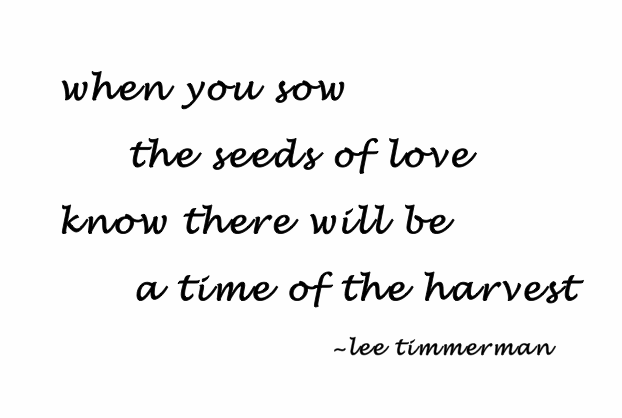Meditation helps us be aware of the wholistic self. Through developing concentration and calming down the breath, we can calm down the conscious thoughts. Once we calm the conscious mind, we can become aware of the subconscious thoughts. Calming down even further, we can become aware of the superconscious mind.
To be in control of our destiny, we use discipline to control and direct our mind. Quieting the mind does not mean to empty it. To quiet the mind means to focus and concentrate it on what we choose. There are many types of meditation. There are meditations on mantras (words) and yantras (images); meditation on theologies, on objects, and on holy ones. However, there are really only three subject matters of meditation. The first of these subjects is the “freedom from.” This is freedom from our mental conflicts, freedom from stress, freedom from all that bothers us in our conscious awareness. It is freedom from the diseases or the eight meannesses of the human condition (hatred, fear, grief, shame, condemnation, race prejudice, narrowness of thinking, and pride of pedigree or tribe). These lie within both the conscious and subconscious mind. Meditation on the conscious mind is about what we want to resolve, create, think, and do, or what we want to go beyond. In order to have meditation on the inner subconscious mind, we have to quiet the conscious mind.
The second subject matter of meditation involves our enslavements to our personal beliefs or the ideologies that we have chosen. This includes fears and issues that may have come from childhood. These issues may have distorted our view. Something may have happened in the past that prejudiced us in a certain way. By quieting the conscious mind, we get to the subconscious mind and can begin to work on these samskaras (beliefs) that are standing in the way of our enjoyment of life. As an example, we may be aware that we have a sliver in our hand, but that awareness doesn’t heal the hand. When we discover an unresolved issue in the subconscious, our awareness of it doesn’t heal the wound. We have to address it by letting go of it or resolving (healing) it.
The third subject of meditation is the greatest of all. It is the exploration of our wholistic life and the “freedom into” our nature. It is how to live in love, joy, harmony, happiness, and freedom. This will happen when we are free from our conflicts and issues. The process of developing a relationship with our self is not going to be instant. However, when we make consistent and steady efforts, it can be an ever-expanding enjoyment of life. Coming to our self will be a continuous evolution and revolution.
How do we meditate? The simplest way is to work with our nature. We have already established that the most important nutrient is breath, because of the oxygenation and detoxification that occur with the breath. It is also one of the basic rhythms we have in our body. Thus, it is natural to base meditation on the breath. We use a mantra[1], which is a word or sound that helps us to concentrate, and link it to our breath. The mantra to begin with is the So Hum.
So Hum is the actual sound of the inhalation and the exhalation. When we breathe in gently, deeply, and diaphragmatically through the nostrils, we will discover the sound of the inhalation is So. As we exhale gently and completely, the sound will be Hum. This mantra means “I am this, I am that.” The sound of our breath exists. We are the sum total of our awareness on the inhalation and exhalation. The mantra then comes to mean “I am this, I am that. I am aware of this about my self, and I am aware of that about my self. I am aware of this about life, and I am aware of that about life.”
Concentrating on the breath and the So Hum, we are able to get in touch with more complete, quieter breathing. It helps us get in touch and stay focused on one of the most basic rhythms in the body, which is the breath. We listen and mentally repeat the sound of the mantra. So on the inhalation and Hum on the exhalation. We pay attention to more than just the sound of So Hum. We pay attention to what we are feeling and what we are experiencing. Can we feel the energy, calmness, and joy?
It is the conscious mind that will hear the truck going by, or the noise in the kitchen. It is the conscious mind that will think about work or things to do. If these are nonessential to our happiness or survival, we can let them go during the time we have set aside for meditation. By calming down and focusing on the breath, we can let go of the nonessential conscious stuff. Once this happens, we will become aware of more subtle thoughts, feelings, and ideas from the subconscious. At this point, we have two choices. We can continue to calm the mind further to have even more subtle experiences, or we can evaluate the issues in the subconscious for a while. We can evaluate the subconscious thoughts for the entire meditation time, or we can just make note of the thoughts so we can work on them later.
“Freedom from” is a term that has to be understood. It is not suppression or repression. “Freedom from” means something no longer affects or impacts our life. We no longer believe something to be true. “Freedom from” means there has been a resolution or ending to the issue or thoughts. We need to become aware of what is in the subconscious because it is part of our mind, and it is the mind that tells us who we are. Every thought coming in does not distract us from peace; rather it is something that is telling us something about our self. It may give insight into our ideas, thoughts, philosophies, fears, insecurities, shame, hatred, or narrowness of thinking. These things must be addressed either in meditation or outside of meditation. If they seem nonessential at the moment, we can choose to continue meditating on the breath and the So Hum mantra so we can become quiet and experience freedom into our nature.


